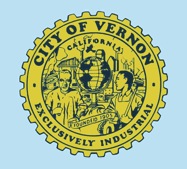The City of L.A. continues to make progress on it’s re:code project. Here is an excerpt from the draft report several months ago. I’m glad to see they are not neglecting industrial zone issues.
Los Angeles, as is true of many modern cities, is
losing industrial acreage to both fragmentation
and alternative uses. Some of the challenge lies
in the modest value of many industrial areas, and
their appealing large-scale, open floor plan buildings,
which attract uses as varying as churches,
indoor trampoline parks, and artists of all kinds.The Mayor’s office and Planning Department
have been working to protect industrial land since
2003, including studying the issue (Los Angeles’
Industrial Land: Sustaining a Dynamic City Economy,
2007), and issuing new staff direction in 2008.In 2007, the industrial sector in Los Angeles employed
one-quarter of the City’s total workforce
and created an estimated $219,000,000 annually
in City tax revenue-more than 410,000 persons
were employed in the industrial sector.
As recently as 2007, 26% of Los Angeles’ industrial
land was already used for non-industrial
purposes, leaving just 6% of the City’s total land
area available for active industrial uses.It is difficult to retain industrial uses where financial
pressure from allowed retail, stand-alone office
and residential uses extends into existing industrial
areas. Thinking specifically about those industrial
areas designated by the City for retention, it is important
to restrict incompatible uses that drive land
costs for industrial users up.
MR1 and MR2 are the most restrictive existing
zones with regard to allowed uses, but they apply
to about 12% of all industrially-zoned land. These
zones were created in 1974 to protect industrial
uses, but have not been applied to enough land
area to meaningfully impact retention of industrial
land.
The more common M1 and M2 zones apply to
41% of all industrially-zoned land. These zones
continue to allow “any enclosed C2 use,” creating
competition by industrial users for land sought
after for retail and office purposes.
In order to achieve true industrial protection, a
more restricted use list must be applied to those
properties with existing industrial uses intended to
be protected.
The existing industrial zones are one example of where the “cascading” or “pyramidal” approach to regulating use (allowing the uses from a previous zone, and then adding a few new uses) leads to frustration for the average code user. For example, the M1 Zone allows any use permitted in the MR1 Zone and any use permitted in the C2 Zone. When the user turns to the C2 Zone, it allows any use allowed in the C1.5 Zone or C1 Zone. Turning back to the C1 Zone, it allows any use in the CR Zone. The user of the code must review the use lists from 5 other zones to find all of the allowed uses for the M1 Zone. Flipping back through the zoning code to determine whether a proposed use is allowed should be remedied in by providing a comprehensive allowed use table.




